
Researchers have discovered a cellular uptake pathway that is crucial for larger molecules. These molecules can be used to create new drugs for treating cancer and other diseases as they bind in unique ways to their targets and are efficiently taken up by cells.
Revolutionary bitopic inhibitors pave the way for innovative disease treatment strategies.
The development of drugs is a balancing act between making sure the drug is a good fit for its target and ensuring it can penetrate the cell membrane to reach that target. Typically, the search for drugs that can cross the cell membrane has focused on small, rigid molecules with nonpolar chemical structures. However, new therapeutic strategies break traditional drug design rules by employing larger, flexibly linked chemical entities.
Recently, a team of researchers from the University of California, San Francisco (UCSF) published a study in Science, where they unveiled a new discovery of a cellular uptake pathway that is crucial for larger molecules. These large, complex molecules bind in unique ways to their targets, are efficiently taken up by cells, and have the potential to be used in creating new drugs for the treatment of cancer and other diseases.
Through a combination of functional genomics and chemical methods, the scientists uncovered an endogenous pathway involving interferon-induced transmembrane (IFITM) proteins that promote the cellular uptake of diverse linked chemotypes. These proteins are found in plasma membranes and often provide cellular resistance to viruses.
Most traditional pharmaceuticals are small molecules that follow simple molecular rules including limits on the molecular size and number of sticky chemical groups on the molecule’s surface. Many key drug targets, such as kinase enzymes often involved in cancer, are difficult to selectively target with traditional drugs.
“There are over 500 human kinase enzymes that are very similar in the pocket where the drug binds, making it a challenge to selectively target a single member of this family and leading to undesirable medication side effects,” explains the study’s first author Kevin Lou. “Increasingly, it has been found that certain linked molecules outside this traditional framework can maintain drug-like properties and gain new mechanisms of action.”
There are many important intracellular drug targets that researchers have been unable to target with small, compact, and rigid molecules. To address this challenge, scientists have taken to linking multiple ligands into a single chemical entity (a linked chemotype). These linked chemotypes can have enhanced potency, greater selectivity, and the capacity to induce the association of more than one target.
“Given this discrepancy between the favorable biological activity of many large, bivalent molecules and traditional concepts of passive permeability, we inferred that linked chemotypes might hijack cellular processes to assist with passage through the cell membrane,” wrote Lou. We selected as an example a bitopic inhibitor of mTOR, RapaLink-1, whose molecular weight falls well beyond common guidelines.”
The team designed two new linked drugs that they hypothesized might take advantage of this cellular entry pathway. They generated DasatiLink-1 through a linker-joined combination of two known inhibitors of the leukemia protein BCL-ABL1, known as dasatinib and asciminib. Since each drug binds a distinct pocket on the target protein, the researchers reasoned that the linked version could affix itself to two points of contact like a two-pronged key inserting into two locks, enhancing its specificity and effectiveness.
They also designed BisRoc-1 by linking two molecules of the chemotherapy drug rocaglamide together in a way that would allow it to bridge two copies of the drug’s protein target. Despite the fact that both of these drugs violate traditional drug design principles, the team showed that both drugs enter cells, bind tightly to their intended targets, and work just as well as the unlinked versions. The linked versions were uniquely dependent on IFITM protein expression in the target cells, supporting a general role for the IFITM pathway across many types of linked molecules. The researchers showed that DasatiLink-1 is specific for only the BCL-ABL1 kinase, unlike the more relaxed specificity of its two constituent drugs when unlinked.
“Linked inhibitors that require a multi-pronged binding mechanism are much more selective,” Lou explains. “They offer substantial advantages as long as they can enter cells efficiently.”
“We discovered that IFITM proteins enable bitopic inhibitors to enter cells and this will likely allow us to target previously untargetable proteins in disease,” said Luke Gilbert, Ph.D., co-corresponding author and the Goldberg-Benioff Endowed Professorship in Prostate Cancer Translational Biology at UCSF. “Hopefully, our study will generate new clues for how IFITM proteins function mechanistically that can be pursued by drug design scientists and virologists.”
The scientists are working on chemically optimizing the properties of the linked BCR-ABL inhibitors to increase their potency and position them as next-generation therapeutics for BCR-ABL mutant cancers. “We are also excited to expand the scope of intracellular targets amenable to bitopic inhibition,” said Gilbert.
Reference: “IFITM proteins assist cellular uptake of diverse linked chemotypes” by Kevin Lou, Douglas R. Wassarman, Tangpo Yang, YiTing Paung, Ziyang Zhang, Thomas A. O’Loughlin, Megan K. Moore, Regina K. Egan, Patricia Greninger, Cyril H. Benes, Markus A. Seeliger, Jack Taunton, Luke A. Gilbert and Kevan M. Shokat, 8 December 2022, Science.
DOI: 10.1126/science.abl5829
The study was funded by the National Institutes of Health, the Damon Runyon Cancer Foundation, the Pew-Stewart Scholars program, the Goldberg-Benioff Endowed Professorship, the Howard Hughes Medical Institute, the Samuel Waxman Cancer Research Foundation, Wellcome Trust, the Ono Pharma Foundation, Pfizer, and Arc Institute.

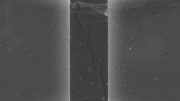

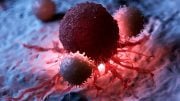
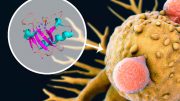
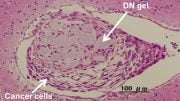
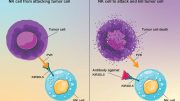
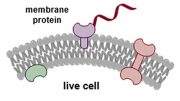
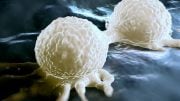
Be the first to comment on "Unlocking the Secrets of Cellular Uptake: Revolutionary Discovery Paves Way for New Cancer and Disease Treatments"